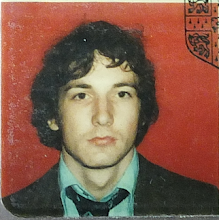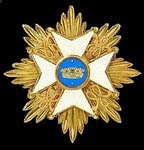
 8 companies in 4 squadrons 1756, theoretical strength 762. Chef: Graf Brühl (the War Minister). Commanders: Oberst von Goltsnitz; from 1758, Oberst Friedrich von Brühl. The chevaulegers regiments were mostly mounted on cheaper Polish horses than the cuirassiers and the Rutowski Dragoons, who had the more expensive German horses.
8 companies in 4 squadrons 1756, theoretical strength 762. Chef: Graf Brühl (the War Minister). Commanders: Oberst von Goltsnitz; from 1758, Oberst Friedrich von Brühl. The chevaulegers regiments were mostly mounted on cheaper Polish horses than the cuirassiers and the Rutowski Dragoons, who had the more expensive German horses.
3 of the 4 chevaulegers regiments, Prinz Karl, Graf Brühl and Prinz Albrecht, were stationed in Poland when much of the Saxon army surrendered at Pirna in 1756 and so avoided the capture and forced enlistment by the Prussians which most of the army suffered. From 1757 those 3 chevaulegers regiments served with the Austrians. All 3 were at Kolin 18th June 1757, where, along with Austrian cavalry and infantry, they delivered the coup de grace to the Prussian army, the first major defeat the Prussians had suffered. As they hacked into the Prussian infantry the Saxon battle cry was "Dies ist für Striegau!" ["This is for Striegau!", the Saxon name for their defeat at Hohenfriedberg 1745]. The Saxons had much to avenge, as Frederick bore a grudge against all things Saxon that manifested itself in all manner of brutalities. All were also at Moys, September 1757, when Winterfeldt's Prussian detachment was crushed and Winterfeldt, Frederick's closest confederate, was killed (possibly shot in the back by his own troops). They were at the Austrian victory at Breslau, November 22nd 1757, as part of Nadasdy's right wing. At Leuthen December 5th 1757 the Saxon chevaulegers regiments were savagely mauled. Initially they were in advance of the main Austrian army at Borne, where Frederick's advance guard beat them and pushed them back on the Austrian army's main lines. They were then sent to the left flank, where they were involved in the main Prussian flank attack that routed the Austrian and allied army. Nostitz, their commander and "a first class officer" (Duffy, "Prussia's Glory"), was mortally wounded and out of a total of around 1200 men in the 3 chevaulegers regiments, 479 were killed, wounded or captured. Graf Brühl lost 111. The 3 chevaulegers regiments served with the Austrian army for the rest of the war; Graf Brühl particularly distinguished themselves at the battle of Freiberg 29th October 1762.
Equipment: Crossbelts, waistbelt and sword frog all white leather; scabbard black with brass(?) fittings and brass handle to sword.
Again, thanks to Christian Rogge for his translation of sections of Friedrich's book on the Saxons, which were a great help in drawing all these templates of the Saxon chevaulegers.
Saturday, 18 July 2009
Trooper of the Saxon Chevauleger Regiment Graf Brühl
Posted by
David Morfitt
at
Saturday, July 18, 2009
![]()
Subscribe to:
Post Comments (Atom)


















Nice historical background for these interesting troops. Gray and blue is very compatable...
ReplyDeleteDavid - Can you clear something up for me? Did this regt. have light blue breeches, waistcoat & facings or the blue shade you've shown here? This is question which has troubled me for years.
ReplyDeleteSteve.
Thanks, Bill. Yes, it's a good combination! :-)
ReplyDeleteAll the best,
David.
Hi Steve,
ReplyDeleteI've taken the blue from Friedrich's "Uniformen der Kurfürstlich Sächsischen Armeen 1683-1763 - Selbstverlag Arbeitskreis Sächsische Militärgeschichte e.V Dresden, 1998"; as you know, being certaint about 18th century colours is next to impossible. It seems the breeches were straw, not blue, by the way. Life was a lot simpler when I didn't do coloured templates!
Cheers,
David.